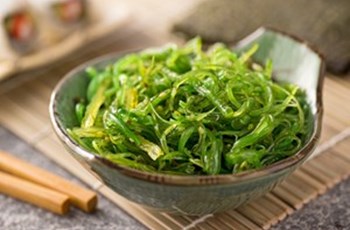
The Recommended Daily Allowance (RDA) for iodine is 150 micrograms per day for proper thyroid functioning.
• RDA Adults: 150 micrograms/day
• RDA Children: 90-120 micrograms/day
• RDA Pregnant: 220 micrograms/day
• RDA Breastfeeding: 290 micrograms/day
Why the Need for Iodine?
Iodine is an essential component of thyroid hormone (T3 & T4) and important for normal thyroid functioning. It also functions as an antioxidant, an anti-infective agent, and is protective in certain cystic conditions like fibrocystic breast disease and ovarian cysts.
Higher levels of iodine intake have been shown to be protective against benign breast changes such as fibrocystic breast disease. Studies show a daily intake of 3000-6000 micrograms per day to be helpful and tolerable for this condition. These higher levels are similar to the typical daily intake seen in Japan.
To make sure our bodies are sufficient in iodine, we can eat foods high in iodine and/or take an iodine supplement. Below is a list of the amount of iodine found in various foods. Many people assume all seaweeds have a lot of iodine. But there is a great deal of variability in the amount of iodine found in different types of seaweed. Kelp has the most, and nori has the least. This means your weekly nori roll at the sushi restaurant may not be giving sufficient iodine!
Dietary Sources of Iodine in Micrograms:
SEAWEEDS
1 tsp Kelp: 3400
1 tbsp Arame: 730
1 tbsp: Wakame 80
1 sheet Nori: 32
FISH
3 oz Cod: 341
3 oz Shrimp: 79
3 oz Halibut: 56
3 oz Herring: 56
3 oz Sardines: 30
3 oz Tuna: 17
SALT
1 tsp Iodized salt: 76
DAIRY
1 cup cow’s milk (US): 56
1 oz mozzarella cheese: 10
1 cup yogurt: 87
OTHER FOODS
3 oz turkey breast: 34
1 cup strawberries: 12
1 egg: 23
SUPPLEMENTS
1 tablet Iodoral TM: 12,000
1 drop Lugol’s TM 5%: 6250
1 typical multi vitamin dose: 150
ZRT offers a simple test to measure iodine levels in dried urine. To learn more, read about our dried urine testing and why too much (or too little) of various nutritional elements has consequences for our overall health.
References:
- Medical Nutrition from Marz 2nd edition. Russell Marz ND MAcOP C 1999 Omni Pennington JAT, Schoen SA, Salmon GD, Young B, Johnson RD, Marts RW. Composition of core foods of the U.S. food supply, 1982-1991. III. Copper, manganese, selenium, iodine. J Food Comp Anal. 1995;8:171-217.
- http://www.whfoods.com/genpage.php?tname=nutrient&dbid=69#references
- Teas, J., Pino, S., Critchley, A., Braverman, L.E., 2004. Variability of iodine content in common commercially available edible seaweeds. Thyroid 14, 836–841.
